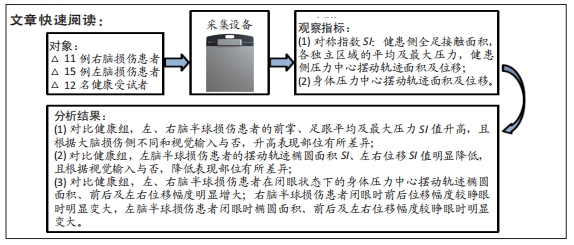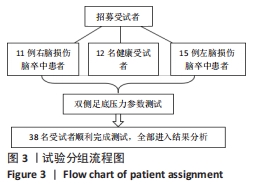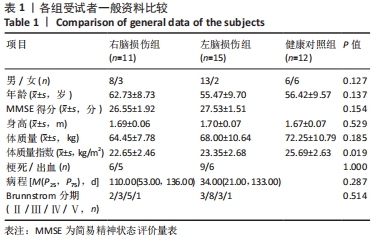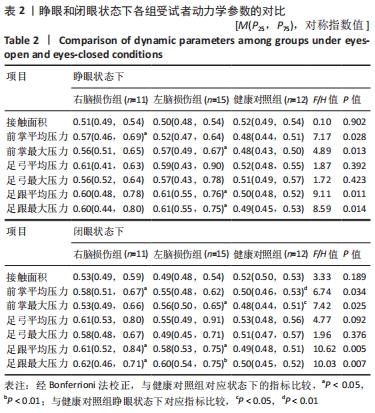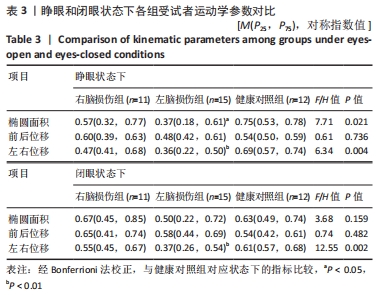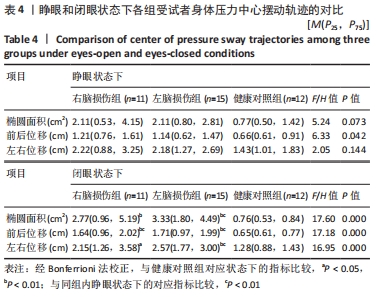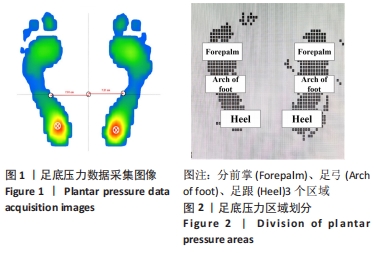[1] Campbell BCV, Khatri P. Stroke. Lancet. 2020;396(10244):129-142.
[2] Sharififar S, Shuster JJ, Bishop MD. Adding electrical stimulation during standard rehabilitation after stroke to improve motor function. A systematic review and meta-analysis. Ann Phys Rehabil Med. 2018; 61(5):339-344.
[3] Hendrickson J, Patterson KK, Inness EL, et al. Relationship between asymmetry of quiet standing balance control and walking post-stroke. Gait Posture. 2014;39(1):177-181.
[4] Ehrhardt A, Hostettler P, Widmer L, et al. Fall-related functional impairments in patients with neurological gait disorder. Sci Rep. 2020; 10(1):21120.
[5] Martins EF, de Araujo BP, de Menezes LT, et al. Is it correct to always consider weight-bearing asymmetrically distributed in individuals with hemiparesis? Physiother Theory Pract. 2011;27(8):566-571.
[6] Spinazzola L, Cubelli R, Della SS. Impairments of trunk movements following left or right hemisphere lesions: dissociation between apraxic errors and postural instability. Brain. 2003;126(Pt 12): 2656-2666.
[7] Rusu L, Paun E, Marin MI, et al. Plantar Pressure and Contact Area Measurement of Foot Abnormalities in Stroke Rehabilitation. Brain Sci. 2021;11(9):1213.
[8] Fernandes CA, Coelho DB, Martinelli AR, et al. Right cerebral hemisphere specialization for quiet and perturbed body balance control: Evidence from unilateral stroke. Hum Mov Sci. 2018;57:374-387.
[9] Chen LC, Cheng PT, Hu AL, et al. Balance evaluation in hemiplegic stroke patients.Chang Gung Med J. 2000;23(6):339-347.
[10] Mansfield A, Danells CJ, Zettel JL, et al. Determinants and consequences for standing balance of spontaneous weight-bearing on the paretic side among individuals with chronic stroke. Gait Posture. 2013;38(3):428-432.
[11] Bakalkin G, Nosova O, Sarkisyan D, et al. Unilateral traumatic brain injury of the left and right hemisphere produces the left hindlimb response in rats. Exp Brain Res. 2021;239(7):2221-2232.
[12] Talis VL, Kazennikov OV. Effects of body turn on postural sway during symmetrical and asymmetrical standing. Exp Brain Res. 2019; 237(9):2231-2237.
[13] 中华医学会神经病学分会,中华医学会神经病学分会脑血管病学组.中国各类主要脑血管病诊断要点2019[J].中华神经科杂志, 2019,52(9):710-715.
[14] Tasseel-Ponche S, Yelnik AP, Bonan IV. Motor strategies of postural control after hemispheric stroke. Neurophysiol Clin. 2015;
45(4-5):327-333.
[15] Niam S, Cheung W, Sullivan PE, et al. Balance and physical impairments after stroke. Arch Phys Med Rehabil. 1999;80(10):1227-1233.
[16] Choi H, Kim WS. Anterior-posterior displacement of center of pressure measured by insole foot pressure measurement system in subacute recovery stage of post-stroke hemiplegia. Technol Health Care. 2018;26(4):649-657.
[17] Hillier S, Lai MS. Insole plantar pressure measurement during quiet stance post stroke. Top Stroke Rehabil. 2009;16(3):189-195.
[18] 魏孟田,及化娟,李立.足底压力测试技术在不同人群中的应用[J].中国组织工程研究与临床康复,2010,14(50):9425-9428.
[19] Güntürkün O, Ströckens F, Ocklenburg S. Brain Lateralization: A Comparative Perspective. Physiol Rev. 2020;100(3):1019-1063.
[20] Heilman KM, Bowers D, Valenstein E, et al. The right hemisphere: neuropsychological functions. J Neurosurg. 1986;64(5):693-704.
[21] Frenkel-Toledo S, Fridberg G, Ofir S, et al. Lesion location impact on functional recovery of the hemiparetic upper limb. PLoS One. 2019;14(7):e0219738.
[22] Frenkel-Toledo S, Ofir-Geva S, Mansano L, et al. Stroke Lesion Impact on Lower Limb Function. Front Hum Neurosci. 2021;15:592975.
[23] 林强,陈武德,郑煜欣,等.基于足底压力下睁闭眼对静态平衡功能的影响[J].康复学报,2021,31(1):17-23.
[24] 林强,郑煜欣,廖婉晨,等.脑卒中患者静态平衡的足底压力分析[J].中国康复理论与实践,2021,27(3):290-296.
[25] Pereira LC, Botelho AC, Martins EF. Relationships between body symmetry during weight-bearing and functional reach among chronic hemiparetic patients. Rev Bras Fisioter. 2010;14(3):229-266.
[26] Roerdink M, Geurts AC, de Haart M, et al. On the relative contribution of the paretic leg to the control of posture after stroke. Neurorehabil Neural Repair. 2009;23(3):267-274.
[27] Vieira TM, Lemos T, Oliveira LAS, et al. Postural Muscle Unit Plasticity in Stroke Survivors: Altered Distribution of Gastrocnemius’ Action Potentials. Front Neurol. 2019;10:686.
[28] Ishii F, Matsukawa N, Horiba M, et al. Impaired ability to shift weight onto the non-paretic leg in right-cortical brain-damaged patients. Clin Neurol Neurosurg. 2010;112(5):406-412.
[29] Mani S, Mutha PK, Przybyla A, et al. Contralesional motor deficits after unilateral stroke reflect hemisphere-specific control mechanisms. Brain. 2013;136(Pt 4):1288-1303.
[39] Vidal AC, Banca P, Pascoal AG, et al. Bilateral versus ipsilesional cortico-subcortical activity patterns in stroke show hemispheric dependence. Int J Stroke. 2018;1747493018767164.
[31] Dieterich M, Brandt T. Global orientation in space and the lateralization of brain functions. Curr Opin Neurol. 2018;31(1):96-104.
[32] Chen IH, Novak V, Manor B. Infarct hemisphere and noninfarcted brain volumes affect locomotor performance following stroke. Neurology. 2014;82(10):828-834.
[33] Hedna VS, Bodhit AN, Ansari S, et al. Hemispheric differences in ischemic stroke: is left-hemisphere stroke more common? J Clin Neurol. 2013;9(2):97-102.
[34] Hugues A, Di Marco J, Ribault S, et al. Limited evidence of physical therapy on balance after stroke: A systematic review and meta-analysis. PLoS One. 2019;14(8):e0221700.
|
